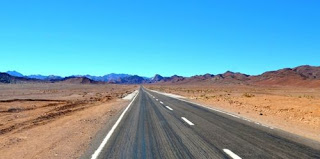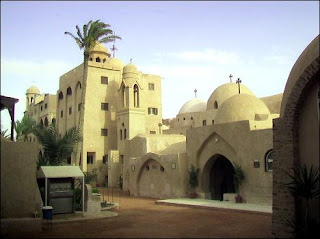The Pyramids Of Giza and The Sphinx
The Pyramids of Giza represent one of the greatest architectural feats by man. The last surviving member of the Seven Wonders of the World, the Great Pyramid of Giza is one of the world's oldest tourist attractions and the reason most people visit Egypt today. There are in fact three main pyramids in Giza; the Great Pyramid of Khufu (or Cheops), The Pyramid of Kafhre and the smaller Pyramid of Menkaura. Each Pyramid is a tomb to a different King of Egypt. In front of the pyramids lies the Sphinx, or Abu al-Hol in Arabic, "Father of Terror". Carved out of a single block of stone, this enormous cat-like sculpture has mesmerized millions of visitors.
Fayoum Oasis
After the noise and crowds of Cairo, the Fayoum oasis, which includes Lake Qaroun, is literally a breath of fresh air. The oasis offers both Egyptian and foreign visitors a relaxing break from city life, a day at the beach and a chance to see oasis life without having to venture too far. It has ancient monuments as well. A relaxing day or two in the Fayoum Oasis is strongly recommended for those in Cairo who are beginning to feel claustrophobic.
Fayoum City, the main town in the oasis, is located 85 km south of Cairo. The Fayoum Oasis is a manmade oasis and also the largest oasis in Egypt. Although usually described as an oasis, Fayoum is not fed by underground water, like the western Sahara Desert oases further south west, but by water from the Nile transported to this natural triangular depression by a series of canals. Having irrigated the oasis, the water runs into Lake Qaroun which despite having dramatically shrunk over the past few thousand years, is at about 215 sq km and still Egypt's largest natural salt-water lake.
WADI NATRUN
Wadi Natrun which is in the eastern desert near the delta, is one of the prime attractions for the Christian religious tourist that comes to Egypt. Christianity reached the area with St. Macarius the Great who retreated there in c.330. Other religious men were drawn to the area and a sort of loose community was formed. The community grew in number and became more organized. Thus, a flourishing monastic system was created.
The history of the Wadi and its importance to the Copts goes back to the 4th century. Anchorites inhabited caves around the valley and built monasteries. After the Arab invasion of Egypt, the Khalifa of Moslems in Arabia gave Christian monks in Egypt the amnesty to practice their religion. For that reason, the area became the official residence of the Coptic patriarch. Even now the patriarch is elected from Wadi Natrun monks.


